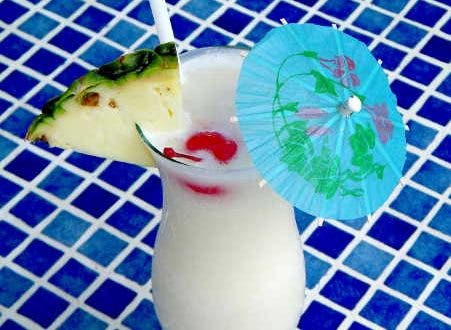The summer heat makes fresh food more palatable, although some consumed at leisure (ice cream, jellies …) are not recommended. In the office for the month of June, the nutritionist of “El Bisturí”, Laura González, encourages us to make our salads complete dishes and insists on reducing the consumption of sugary drinks and fatty meats on barbecues
In summer, leisure time increases in which outings with friends and family are frequent. Laura González, Head of Health and Nutrition at Nestlé, answers the questions from the June office so that this summer our meals and drinks are occasions in which to enjoy in a healthy and balanced way.
Can you drink more soft drinks in summer?
“In our usual diet we must avoid all those drinks that tend to replace water as a regular drink (sugary or sweetened beverages, nectars, sugary dairy products, flavored waters, energy drinks, etc.)”. This recommendation that Laura González emphasizes in the office seems to be forgotten during recess times. However, it is important to remember that health does not go on vacation.
“The nutritional contribution of these drinks is very limited, and they also have a lot of sugar.” For example, a can of soda contains between 50 and 55 grams of sugar, and it can exceed 80 grams in half-liter drinks. The specialist explains how this excessive intake of sugar increases the risk of overweight and obesity linked to chronic diseases such as diabetes or cardiovascular diseases.
In addition, the heat can not only encourage the consumption of soft drinks, but also that of other foods linked to these moments of leisure, such as ice cream, pastries or fast food. “It is not a matter of systematically rejecting them, but they should not be part of our daily diet”, clarifies the nutritionist.
What is the difference between jellies and gelled waters?
Proper hydration is important at all ages, but there are especially vulnerable groups of people. “In the case of the elderly with dysphagia, that is, with difficulty in swallowing fluids, we have to use products that are more viscous to ensure safe swallowing,” she reports.
“Commercial jellies are not a good option, even if people think they are,” says Laura González. According to the specialist, to preserve their gel-like texture they must be kept cold. “If the cold chain is broken, the gelatin loses its homogeneity and presents supernatant water, which can endanger the health of the patient.”
On the other hand, due to the fact that this gel texture dissolves at a temperature similar to that of the human body (about 37ºC), when the gelatin is introduced into the mouth, it melts and the health of the patient is put at risk again. “This is even more serious in patients with neurological pathology, since they tend to retain food in the mouth and take a long time to swallow, which can cause a total liquefaction of the gelatin,” says the specialist.
If the patient requires modification of the texture of the liquids, Laura González recommends using gelled waters. “Gelled waters are drinks made mainly with gums that in water have the ability to increase viscosity and form gels.”
According to the nutritionist, these gelled waters, unlike gelatins, do guarantee stability in this viscous texture at high temperatures and in contact with the mouth, so they are good and safe options to hydrate patients who cannot ingest. liquids.
Should we have more salads in summer?
“Although salads are not exclusive to summer, when the heat is hot we feel like it more, and it is especially advisable to include them in our regular diet.” According to the El Bisturí collaborator, in summer the need for water increases and we need to provide it at many times of the day, also in the form of fresh food.
The salad offers a wide variety of combinations that make it the queen of the kitchen in summer. Laura González suggests choosing a base of fresh vegetables, pasta, potatoes, rice or legumes, and adding other complements (assorted fruits, boiled eggs, pickles, nuts and seeds, canned fish and shellfish, cheese, cold cuts, bread, etc. .). “The best final combination is achieved when fresh vegetables combine their color, texture and flavors, and are preferably washed with an extra virgin olive oil,” she says.
At this time of year, salad can be a complete dish while being light, filling and, above all, appetizing. However, we must always be careful with oil and sauces. “If we abuse these ingredients, a salad can go from being a balanced and light dish to a high calorie dish,” she explains.
How many barbecues can you have per month?
Barbecues seem like an innocent activity, but the recommendation is always to limit your consumption. “It has been shown that cooking foods over hot coals, especially those rich in fat and salt such as red meat or sausages that are commonly used in this type of preparation, generates potentially toxic compounds,” explains Laura.
“Depending on the foods we choose and how we prepare them, the number we can make per month will depend,” she says. According to the advice of the specialist, lean meats, fish and seasonal vegetables are preferable. “For example, we can make vegetable skewers with chicken,” she recommends.
In addition, we must take some precautions, such as keeping the food at a certain distance from the fire, removing visible fat, making small cuts so that the food is less time in contact with the grill or avoiding scorching the food. “In this way we will minimize the appearance of toxic compounds and our barbecues will be healthier, less caloric,” she indicates.
With these tips, we can consume barbecues more frequently and maintain better hydration during this summer.





